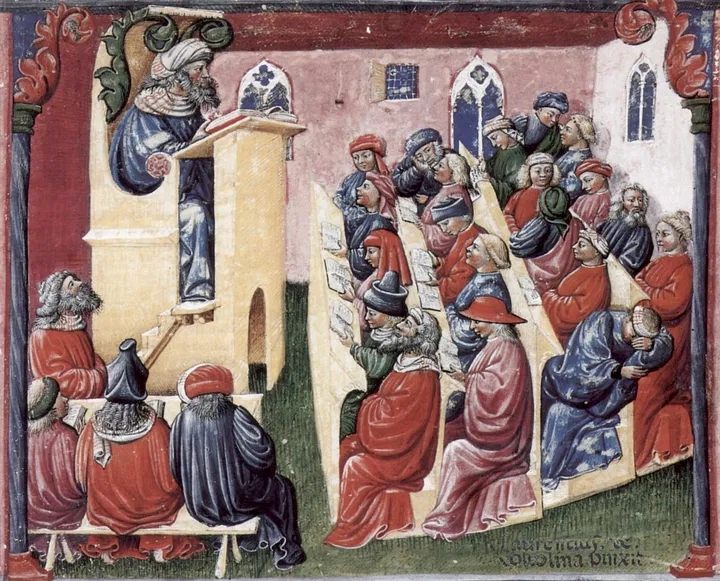From Medievalists:
If parents wished for their children to have schooling in the Middle Ages (and, naturally, if they had money) there were a few options. Many monasteries offered to educate boys, since learning was almost always meant to set children on the path towards a life in the religious community. Or, if parents preferred a more urban environment, they could send their children to cathedral schools – once again, run by the church.ShareIn some places, municipal schools existed, but their curricula would also run along religious lines (by our standards). Boys who were destined to become knights would be fostered in other knights’ homes to learn their martial skills, and noble girls could either receive instruction from nuns (at a cloister), or from other women or tutors in the home, although this could be a little dangerous to a young lady’s virtue, as Heloise’s parents discovered.
At school, students were instructed in Latin, since it was the language of intellectual thought, with vernacular (that is, mother-tongue) schools appearing as the Middle Ages drew to a close. The curriculum consisted of a “liberal arts” education, which was divided into the trivium and the quadrivium, according to classical tradition. The trivium consisted of grammar (Latin, that is), rhetoric, and logic. The quadrivium consisted of arithmetic, geometry, astronomy, and music.
Students did take notes during their lessons, but would most often use wax tablets, since vellum was very expensive (being made of animal hide), and paper was not prevalent until the late Middle Ages. As a result of the lack of note-taking paper, students were forced to memorize great quantities of information, something that would have come more easily to them than it would to us, as they were not trained to write things down instead of remembering (as we are now). Exams were done orally, both for this reason and as an exercise in rhetoric. (Read more.)



















No comments:
Post a Comment